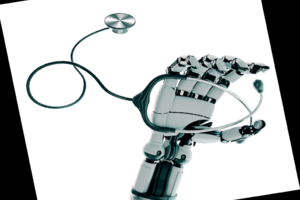
In colorectal surgery, robotics is used mainly for rectal resections. Robot-assisted surgery allows better visualisation and greater precision when it comes to dissection in confined spaces. This is especially useful in rectal surgery as the rectum is confined within the bony pelvis. The wristed miniature arms of the robot allow the surgeon to perform complex procedures within the confined space, like knot-tying and preservation of nerves, which may be difficult for laparoscopic instruments and the surgeon’s hands to access.
In laparoscopic rectal resections, there are usually three to four surgeons and assistants at each surgery. With the robot, usually only one assistant is needed. This reduces reliance on manpower. It also allows the surgeon full control over all the instruments and camera and positioning these in an optimal way to help with the surgery. The laparoscopic camera provides a two-dimensional vision without perception of depth. The magnified, high-definition three-dimensional view of the robot-assisted system, on the other hand, allows for visualisation of fine structures like nerves and blood vessels. This means that urinary and sexual dysfunctions – common complications of rectal surgery – may also be minimised with robotic-assisted surgery. It has been shown that patients experience earlier recovery of nerve function after robotic surgery for rectal resections.
As it is a form of minimally invasive surgery, there is less pain and blood loss, quicker recovery, a more comfortable healing period and a shorter hospital stay when compared with open surgeries. Scars are also smaller and less noticeable. Results from multicentre trials comparing robotic-assisted surgery with laparoscopic surgery are pending.







